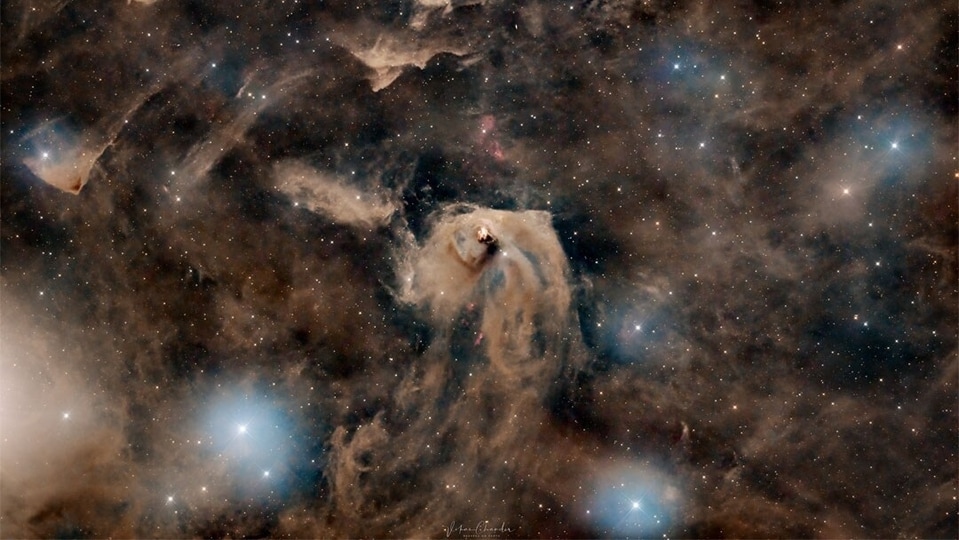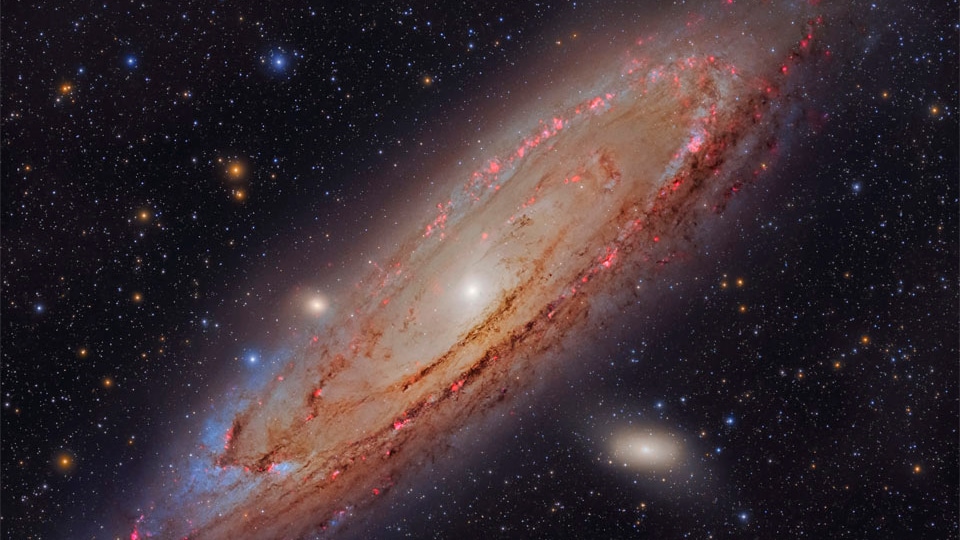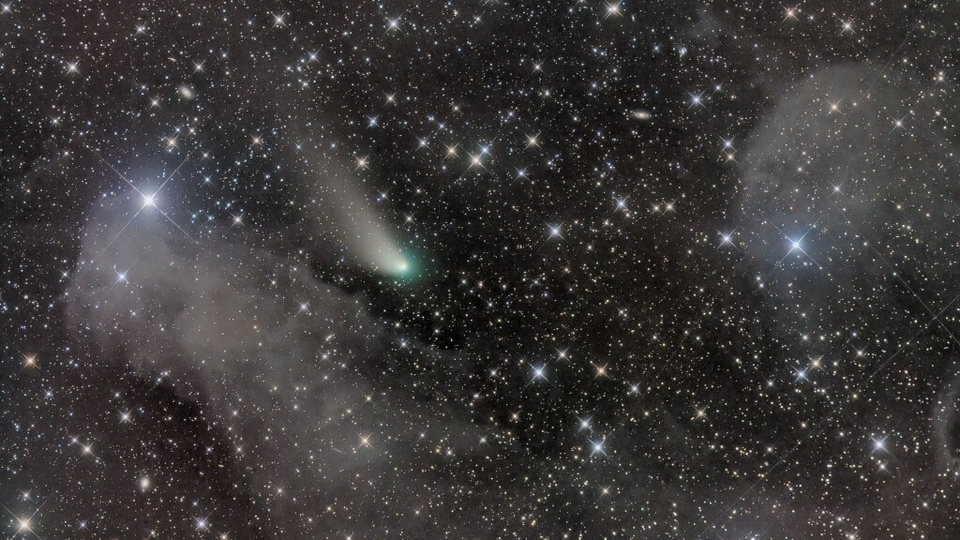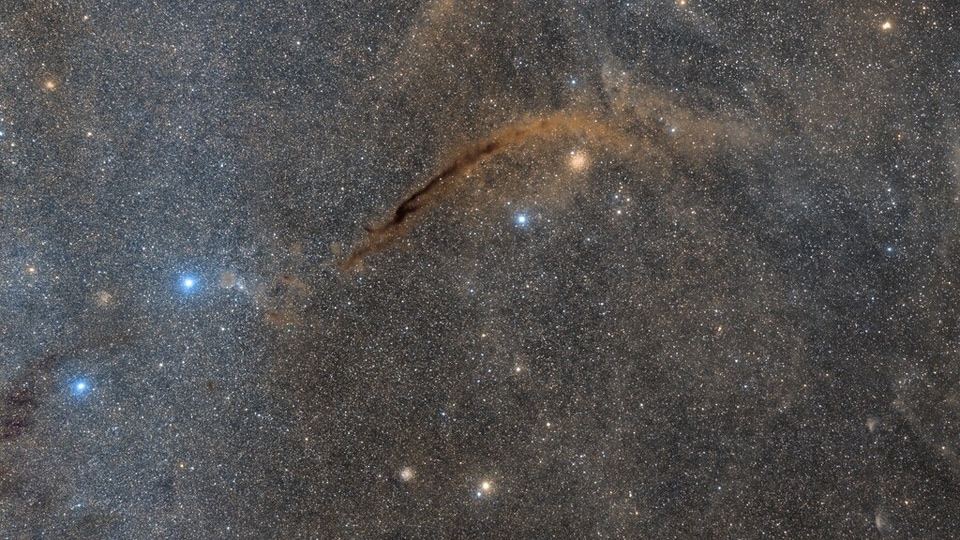NASA Astronomy Picture of the Day 30 March 2023: Globular star cluster and Dark Doodad Nebula
Today’s NASA Astronomy Picture of the Day is the Dark Doodad Nebula which lies beside the globular star cluster NGC 4372.






 View all Images
View all ImagesAfter the formation of stars takes place in a nebula, many of them form groups from the same Nebula, forming a Star Cluster. Star clusters can contain as few as ten stars or as many as millions of stars. One type of star cluster is the globular star cluster. Globular clusters are stable, tightly bound groups of tens of thousands to millions of stars that are associated with all types of galaxies, according to NASA. Their dense populations of stars and mutual gravitational attraction give these clusters a roughly spherical shape that holds a bright, central concentration of stars surrounded by an increasingly sparse sprinkling of stars.
Today's NASA Astronomy Picture of the Day is the Dark Doodad Nebula which lies beside the globular star cluster NGC 4372. Also known as Caldwell 108, the globular star cluster is located about 19000 light-years away in the constellation Musca. It was discovered in 1826 by the Scottish astronomer James Dunlop from his observation post in Australia.
Tech used to capture the picture
The picture was captured by astrophotographer Matias Tomasello. Tomasello captured the stunning image with the help of Canon 6D Hutech camera mounted on EQ6-R mount. Additionally, a Canon lens 200 with f2.8 was also used.
NASA's description of the picture
The delightful Dark Doodad Nebula drifts through southern skies, a tantalizing target for binoculars toward the small constellation Musca, The Fly. The dusty cosmic cloud is seen against rich starfields just south of the Coalsack Nebula and the Southern Cross. Stretching for about 3 degrees across the center of this telephoto field of view, the Dark Doodad is punctuated near its southern tip (upper right) by yellowish globular star cluster NGC 4372.
Of course NGC 4372 roams the halo of our Milky Way Galaxy, a background object some 20,000 light-years away and only by chance along our line-of-sight to the Dark Doodad. The Dark Doodad's well defined silhouette belongs to the Musca molecular cloud, but its better known alliterative moniker was first coined by astro-imager and writer Dennis di Cicco in 1986 while observing Comet Halley from the Australian outback. The Dark Doodad is around 700 light-years distant and over 30 light-years long.
Catch all the Latest Tech News, Mobile News, Laptop News, Gaming news, Wearables News , How To News, also keep up with us on Whatsapp channel,Twitter, Facebook, Google News, and Instagram. For our latest videos, subscribe to our YouTube channel.
































